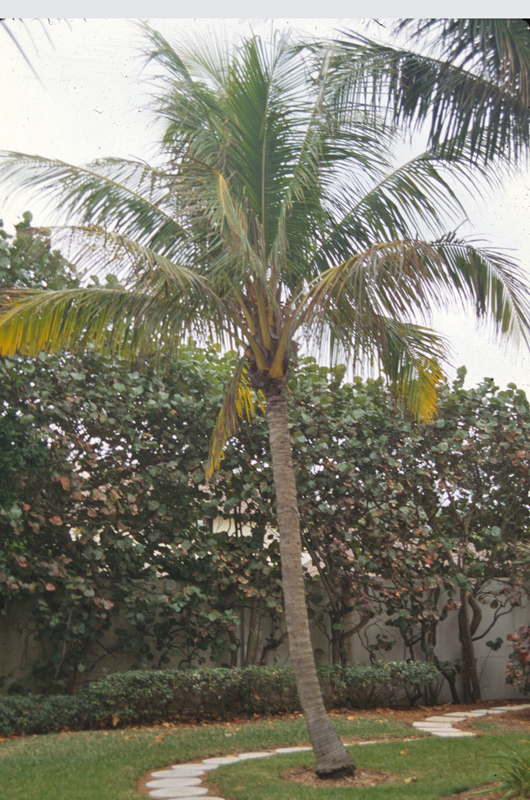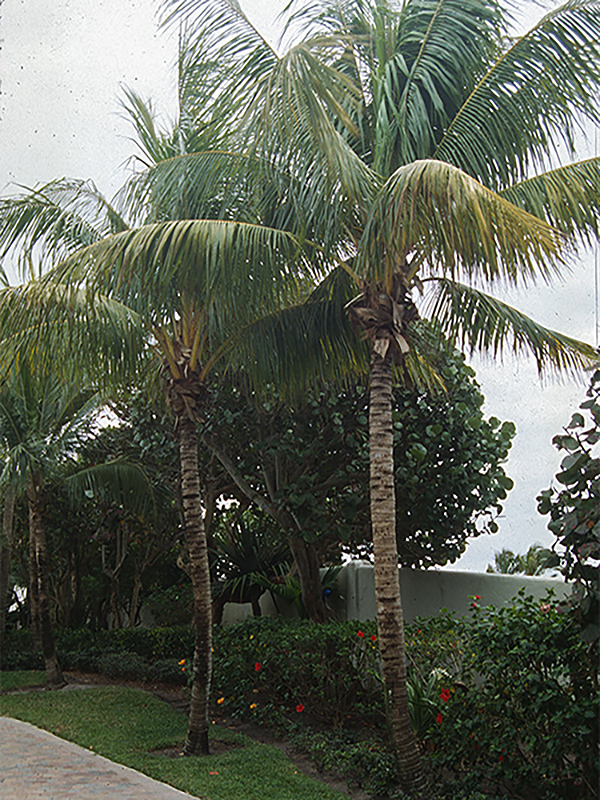| Landscape | Used for parks, along streets, residential yards, near commercial buildings, hotels, and on golf courses. |
| Propagation | Propagated by seed |
| Cultivation | Best grown in fertile, moist, well-drained soils in full sun. |
| Notable Specimens | Morikami Museum and Japanese Gardens, Delray Beach, Florida, United States of America |
| Habitat | This tropical tree is found in humid, frost free coastal lowlands and seashores. |
| Bark/Stem Description | This tree has a single-trunk with grey, smooth bark. |
| Flower/Leaf Bud Description | The pinnate leaves grow 4-6 metres long and have 60-90 leaflets. |
| Leaf Description | Leaves are 4-6 m long with individual pinnae reaching up to 1 m in length. |
| Fruit Description | The coconuts are rough and brown and grow 30-35 cm around. They contain milk, oil and meat. |

